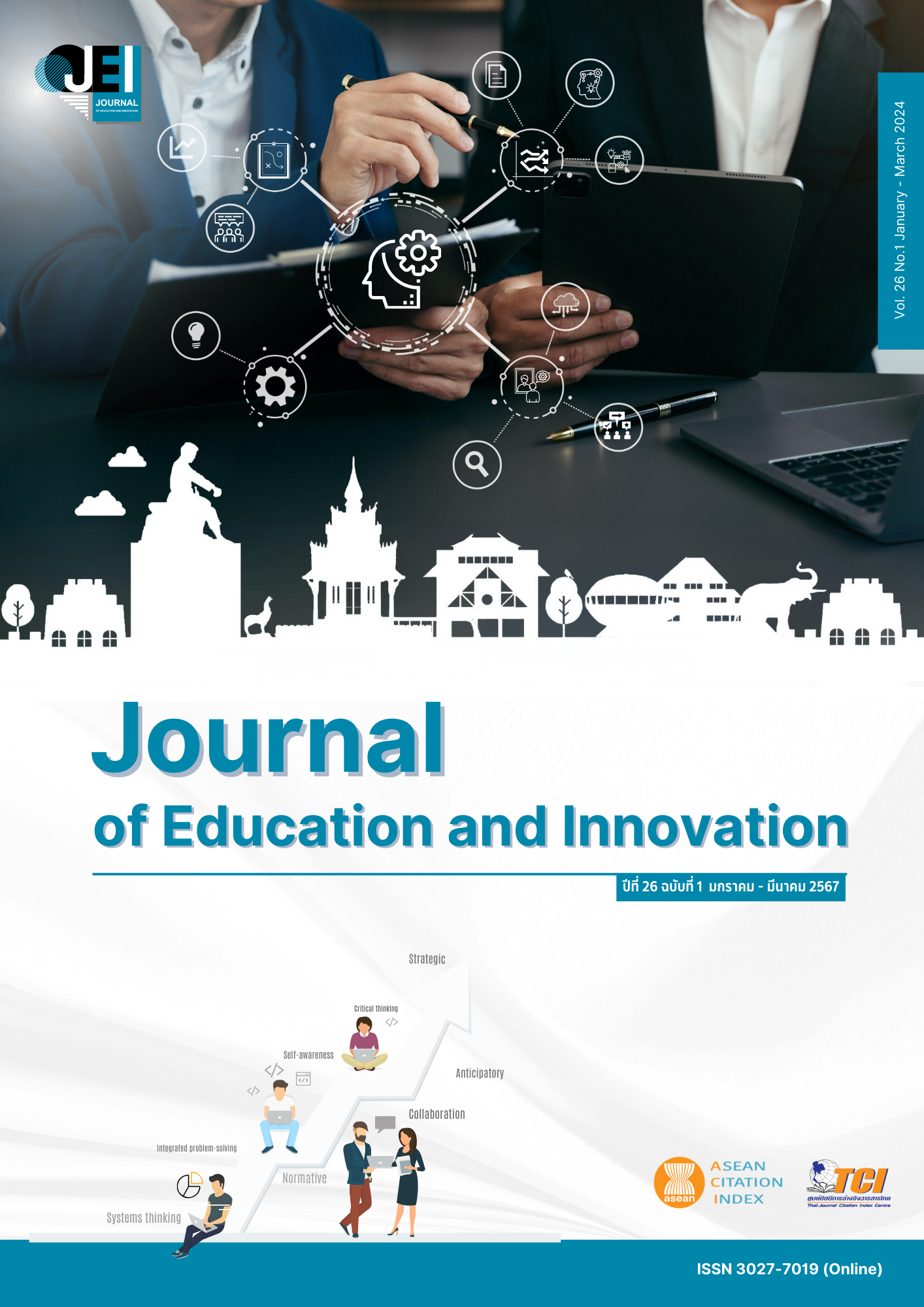THE DEVELOPMENT OF USING THAI LANGUAGE FOR COMMUNICATION DIAGNOSTIC TESTS FOR TEACHER STUDENTS: AN APPLICATION OF USING G-DINA MODEL
Main Article Content
Abstract
The purposes of this research were 1) to develop and examine the quality of Thai language for communication diagnostic tests for teacher students; and 2) to diagnosis of teacher students’ Thai language for communication with G-DINA MODEL. The sample consisted of 566 teacher students (three and four-year curriculum) using multistage random sampling. Research Instruments were Thai language for communication diagnostic tests. Data were analyzed by descriptive statistics, frequency, percentage, and the G-DINA MODEL analysis. The research results can be summarized as follows:
1. Thai language for communication diagnostic tests for teacher students was developed with 59 items, 5 multiple-choice questions in accordance with Teacher's Council of Thailand. The Thai language for communication diagnostic had Content validity (IOC = 0.60-1.00), Difficulty (P = 0.21-0.79), Discrimination (r = 0.201-0.567), and Reliability (KR-20 = 0.734) through the criteria. The diagnostic test was classified into four competencies, namely, listening ability with 5 attributes (16 items), speaking ability with 8 attributes, (15 items), reading ability with 3 attributes (13 items) and writing ability with 5 attributes (15 items).
2. The G-DINA Model was in accordance with all four competency criteria. The model was consistent with the empirical data score and the results of the diagnostic validity analysis revealed that the developed diagnostic test was accurate and met the required criteria. And most of sub-traits have a Guessing Parameter and a Slipping Parameter through a low RMSEA parameter which can diagnose teacher students’ Thai language for communication with their competencies classified and in the latent class of the test takers with the competencies in various areas according to the characteristics.
Article Details

This work is licensed under a Creative Commons Attribution-NonCommercial-NoDerivatives 4.0 International License.
The owner of the article does not copy or violate any of its copyright. If any copyright infringement occurs or prosecution, in any case, the Editorial Board is not involved in all the rights to the owner of the article to be performed.
References
Agricola, B. T., Prins, F. J., van der Schaaf, M. F., & van Tartwijk, J. (2018). Teachers’ diagnosis of students’ research skills during the mentoring of the undergraduate thesis. Mentoring & Tutoring: Partnership in Learning, 26(5), 542–562. DOI: 10.1080/13611267.2018.1561015
Basokcu, O.T., Ogretmen, T., & Kelecioglu, H. (2013). Model data fit comparison between DINA and G-DINA in cognitive diagnostic model. Education Journal, 2(6), 256 – 262. DOI: 10.11648/j.edu.20130206.18
Chansakul, S., & Boonsri, S. (2017). The use of DINA and G-DINA models to diagnose nursing literacy. EAU Heritage Journal Science and Technology, 11(3), 57-71.
Choi K., Szakal B., Chen YH., Branzei D., Zhao X. (2010). The Smc5/6 complex and Esc2 influence multiple replication-associated recombination processes in Saccharomyces cerevisiae. Journal Article Research Support. Mol Biol Cell, 21(13), 2306 – 2314. DOI: 10.1091/mbc.e10-01-0050
De la Torre, J. (2011). The generalized DINA model framework. Psychometrika, 76(2), 179 – 199. DOI: 10.1007/s11336-011-9207-7
Intakanok, S. (2016). Creative writing. Udon Thani: Udon Thani Rajabhat University.
Li, H., Hunter, C. V., & Lei, P. W. (2016). The selection of cognitive diagnostic models for a reading comprehension test. Language Testing, 33(3), 391–409. DOI: 10.1177/0265532215590848
Ma, W., & de la Torre, J. (2019). Category-level model selection for the sequential G-DINA model. Journal of Educational and Behavioral Statistics, 44(1), 45–77. DOI: 10.3102/1076998618792484
Olivares, A. M., & Joe, H. (2014). Assessing approximate fit in categorical data analysis. Multivariate Behavioral Research, 49(4), 305 – 328. DOI: 10.1080/00273171.2014.911075
Office of the Commission on Higher Education. (2017). Ministry of Education Policy, 15-Year Higher Education Plan Framework: National Education Plan Direction Framework (2017 – 2031). Determination of graduate production processes in higher education. Bangkok: Office of the Higher Education Commission.
Rupp, A. A., Templin, J., & Henson, R. A. (2010). Diagnostic measurement: Theory, methods, and application. New York: The Guilford Press.
Somrat, K. (2023). The Development of English competence diagnostic tests for preservice teachers by applying the G-DINA model. (Dissertation). Phitsanulok: Naresuan University.
Teachers Council of Thailand. (2021). Accreditation of the graduate diploma in teachers professional standards. Bangkok: The Teachers Council of Ladprao Printing House.
Udomsin, P. (2001). Measurement and evaluation of teaching mathematics. Bangkok: Baphit Printing.


